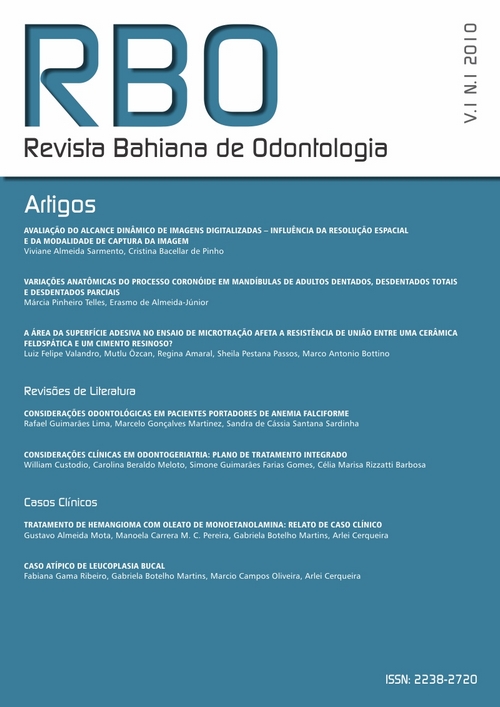Anatomical variations of the coronoid process in jaws adult indentations, toothless toothless partial and total
DOI:
https://doi.org/10.17267/2596-3368dentistry.v1i1.2Keywords:
Mandible, Form perception, Tooth loss, Permanent dentitionAbstract
Purpose: To evaluate the correlation between the alteration of coronoid process format and partial or complete tooth loss in dry mandibles of adult human, considering the gender. Methods: On this study, there were analyzed 198 dry mandibles of adult human, of both genders, divided into three groups. The first group was constituted by mandibles with the presence of all teeth (68 mandibles); the second, with some dental teeth (79 mandibles) and the third, edentulous mandibles (50 mandibles). The analysis of coronoid process format was performed by visual observation and registered on standard records. Results: It was found that the absence of teeth, even on male or female mandibles, caused alterations on coronoid process that was modified from rounded on mandibles with presence of all teeth, to the scythe on edentulous mandibles. On the partial edentulous mandibles, the rounded format was the most frequent on men and the scythe format on the female gender. Conclusion: The absence of tooth, even partial or total, contributed to the modification of coronoid process format. Even that, the differences between the genders was no statistically significant.Downloads
Download data is not yet available.
Downloads
Published
2018-06-29
Issue
Section
Original Articles
How to Cite
Anatomical variations of the coronoid process in jaws adult indentations, toothless toothless partial and total. (2018). Journal of Dentistry & Public Health (inactive Archive Only), 1(1). https://doi.org/10.17267/2596-3368dentistry.v1i1.2



